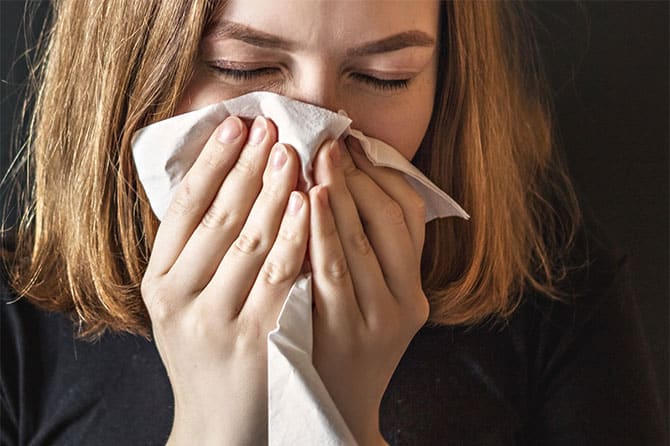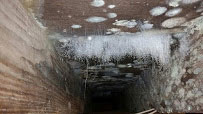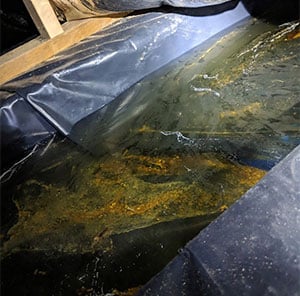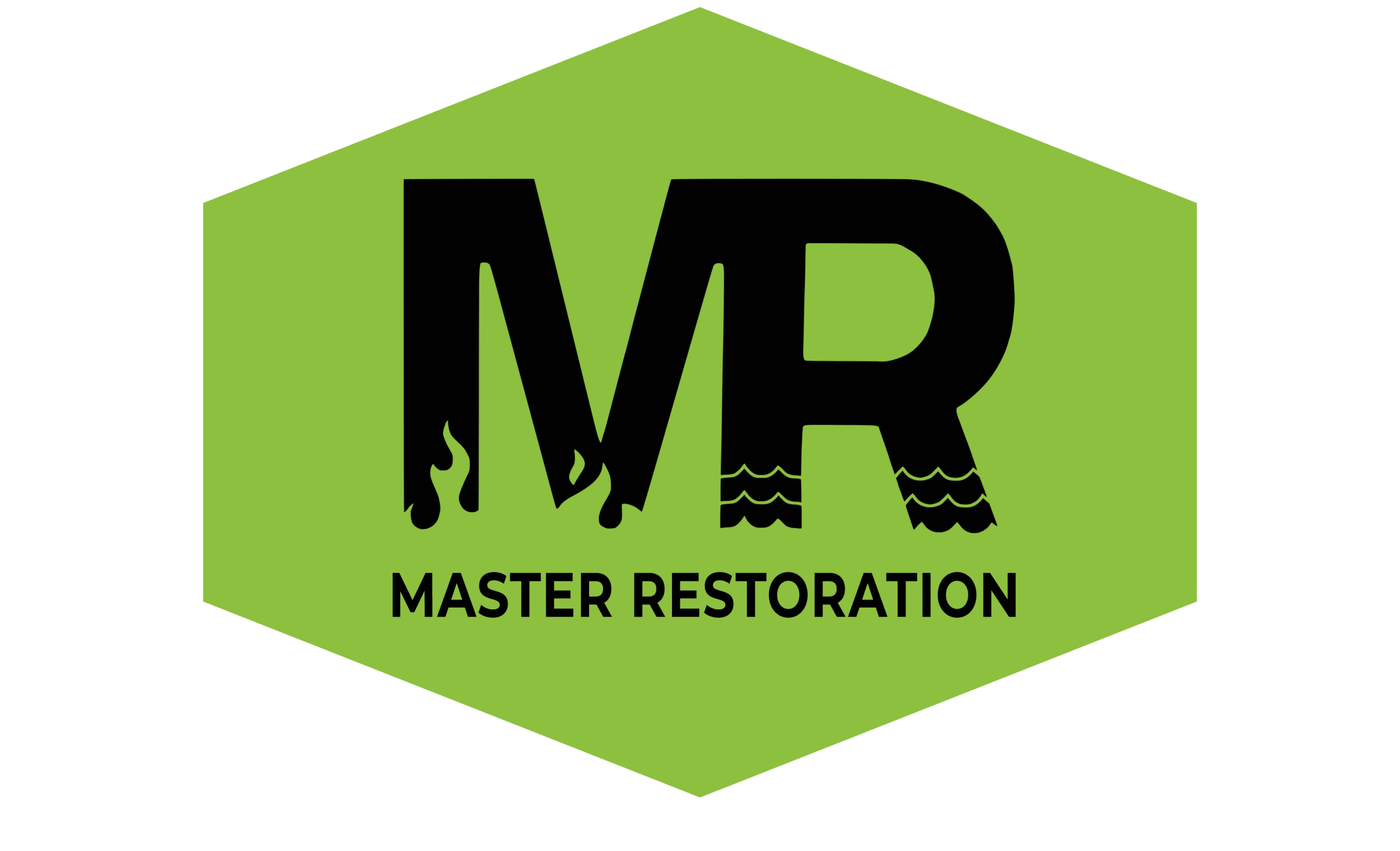
Do you have a mold allergy? Learn how your home could be contributing to your mold allergy symptoms
Are you constantly coughing, sneezing, and have itchy eyes – nose and throat while at your home? If so, you may have a mold allergy. Did you know mold allergy symptoms can even include dry, scaly skin? As a homeowner, one of the last things you want to see is mold growing in your home.
In the following sections, we will cover what mold is, how it spreads, what is a mold allergy, where you can find it in your home, and most importantly, how the heck can you get rid of it.

What is Mold?
Mold is a type of fungus that can be black, white, orange, green, or purple. It typically thrives on moisture and quickly grows and multiplies. Its lightweight spores can easily travel through the air. As a vital part of the ecosystem, it lives almost everywhere, both indoors and outdoors.
When outdoors, mold plays a crucial role in breaking down organic matters, such as cut grass, leaves, and rotting wood, among others. However, it can be a major problem when found in your home as it can damage your property and compromise the family’s health,
How do mold spores grow and spread?
As mentioned, mold grows and multiplies through its tiny spores. While some mold spores are released in dry, windy weather, others get spread in foggy, humid conditions. For the most part, mold spores spread after an extended rainfall as well as flood or water damage.
Mold spores can get in your home when they settle on your clothes, shoes, coats, handbag or briefcase, and even your pets. They can also enter the house through open windows, doors, screens, and the air conditioning unit. If your home has a high moisture content, they can further grow and multiply.
Simply put, mold needs moisture to grow. You’re more likely to see mold in damp places like the bathroom, under the kitchen sink, behind the dishwasher, in the laundry room and in basement and crawl space areas.
How do I know if I have a mold allergy?
According to the Mayo Clinic, symptoms to mold allergies can include:
Sneezing
Runny or stuffy nose
Cough and postnasal drip
Itchy eyes, nose and throat
Watery eyes
Dry, scaly skin
If any of these symptoms are persistent, especially while you are in your home, you should see your physician.
5 tips for controlling mold allergies in your home
Make your home less mold-friendly
The best option for eliminating mold allergies in your home is to control the moisture levels. Keeping the humidity level below 60% is sufficient, however, a level closer to 50% is ideal. One inexpensive option to measure the humidity level in your home is to purchase a hydrometer. Once you know the humidity level in your house, purchasing a quality dehumidifier is highly recommended.
Check your basement or crawl space
Basements and crawl spaces are ideal places for mold to grow. Any any source of wall moisture, ground moisture or an unknown pipe break are recipes for disaster. If you have basement, choose flooring such as linoleum or concrete (preferably sealed) and be cautious of what is being stored there. Boxes, blankets, clothes etc… are excellent places for mold to hide and grow.
 For houses with crawl spaces, make sure to inspect the foundation and crawl area for any signs of water at least once a year. Spring is the most likely time for water and moisture to develop due to the increased rainfall. Look for white, flaky algae on top of the vapor barrier for indications of past water pooling. Ideally, you would not want to see anything on top of the vapor barrier.
For houses with crawl spaces, make sure to inspect the foundation and crawl area for any signs of water at least once a year. Spring is the most likely time for water and moisture to develop due to the increased rainfall. Look for white, flaky algae on top of the vapor barrier for indications of past water pooling. Ideally, you would not want to see anything on top of the vapor barrier.
In extreme instances, ground water can appear under your home after a wet spring. If left untreated, this is a perfect breeding ground for mold to grow and your mold allergy symptoms to bloom out of control.
Use an appropriate cleaning agent
If you spot mold on a window sill or on tile in the bathroom, use a bleach solution or a commercial strength cleaning product. Visible mold on drywall is another issue. Usually this indicates a far more serious issue and it would be a good idea to get a professional’s opinion. After all, cleaning the mold is just half of the battle, finding the source for why it is growing in the first place is much more crucial.
Use an air filter
Another great way to reduce mold allergies in your home is to keep your windows shut and use a HEPA air filter on your air conditioning system. HEPA air filters can be purchased at any major home supply store and will greatly reduce the amount of mold spores throughout the house.
National Allergy Bureau Mold Counts
BONUS - Are home mold test kits worth it?
The quickest answer is emphatically NO. Home mold testing kits are not reliable and even when they are, they only tell you that you have mold which of course you already know. In fact, in 2007 Consumer Reports evaluated four different types of mold testing kits and all of them were rated “Not Recommended”. The article noted that in some of the kits, the vials leaked over the entire kit which negated the results. Also, there were no expiration dates on the kits which meant that could have been contaminated before even purchasing them. Just know that every house has mold present but controlling how much and making sure to eliminate sources for growth is the key. Don’t waste your money on the mold kits.
Conclusion
Mold in your home is a real problem especially if your mold allergy symptoms are severe due to underlying health conditions. Keeping a hydrometer in your home is a great way to keep an eye on the moisture levels and by adding a dehumidifier, you will not only know what the levels are but also be able do something about it. Last but not least, cleaning any visible mold requires the correct solution to kill the active and dead spores. If you have an active mold situation, it is best to get a qualified professional to assess your options.
At Master Restoration of Idaho, we provide water, fire and mold reconstruction and restoration services for the Boise, Meridian, Eagle, Nampa and Caldwell Idaho areas. If you have mold allergy symptoms and believe you have a mold problem in your home, contact us and we will come out to your home or business and conduct a free mold inspection.
